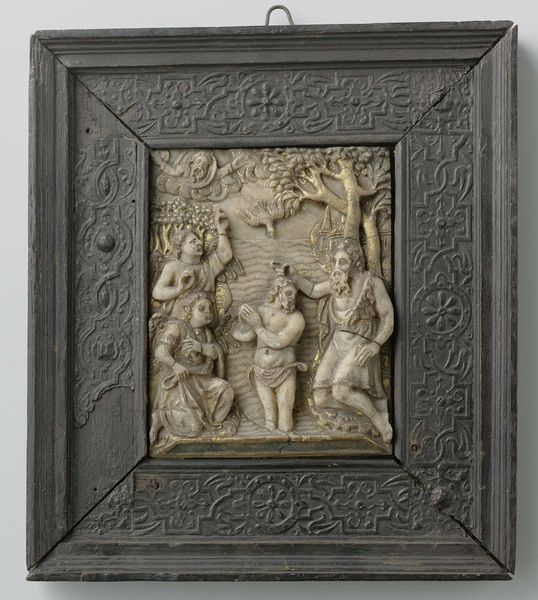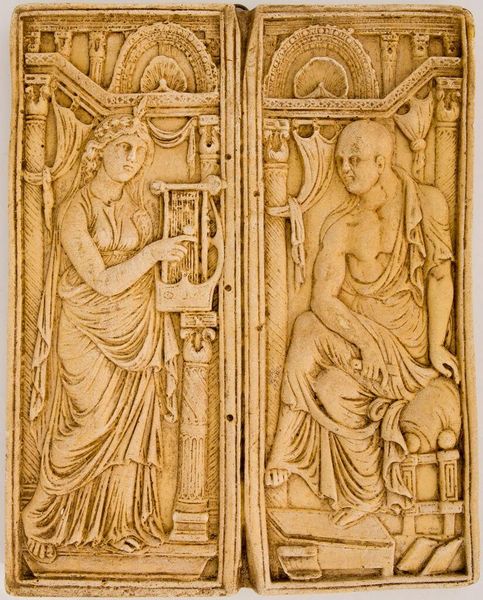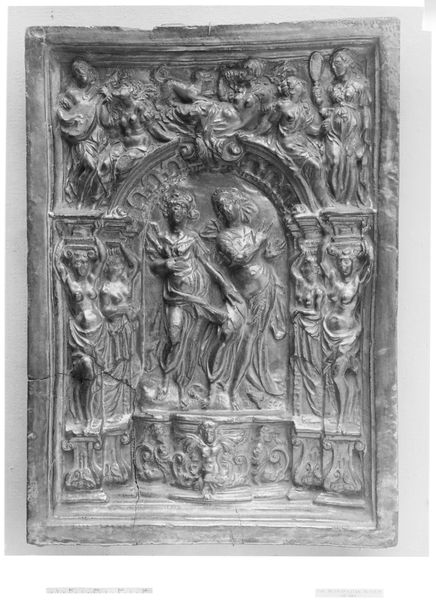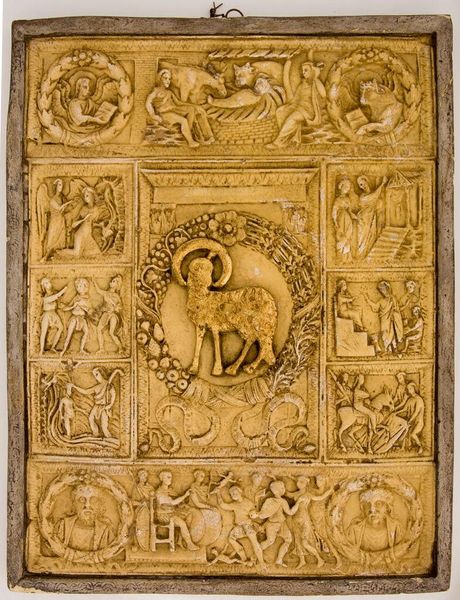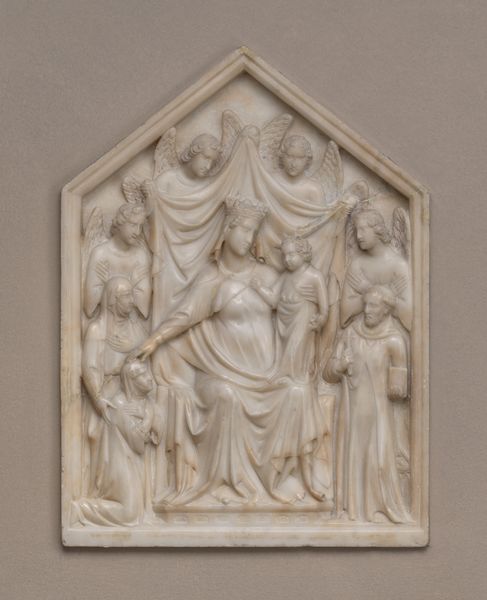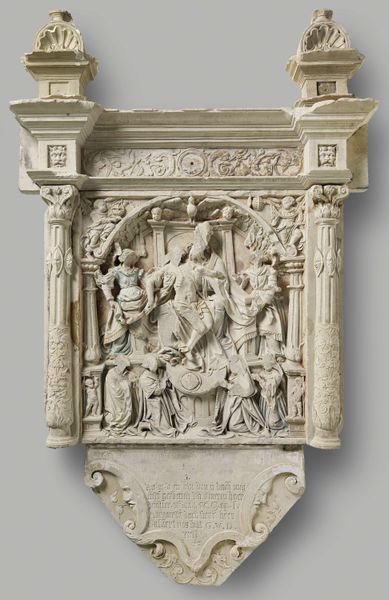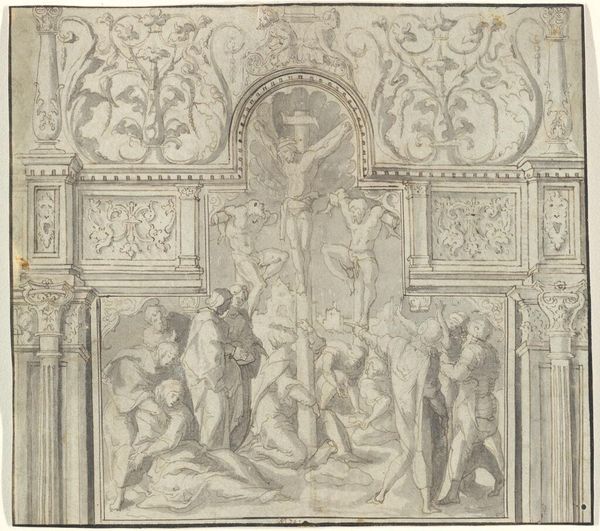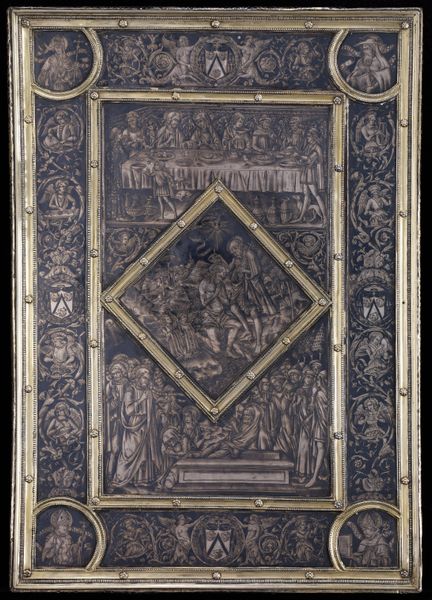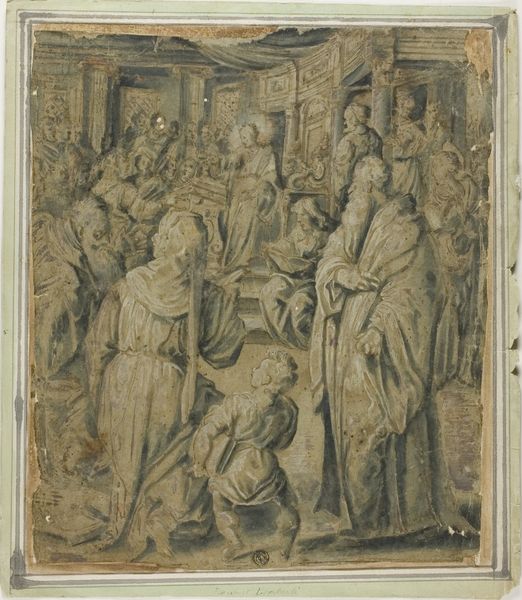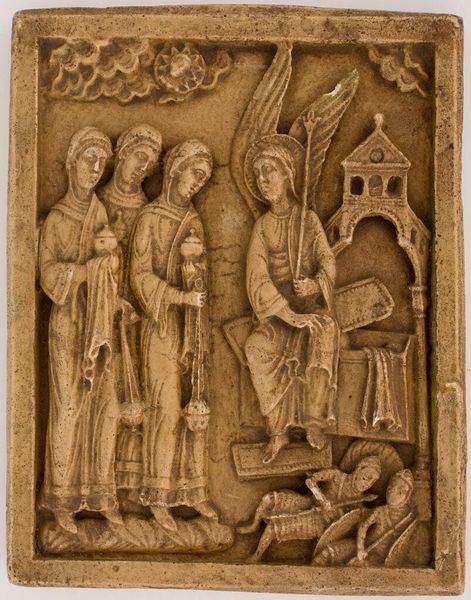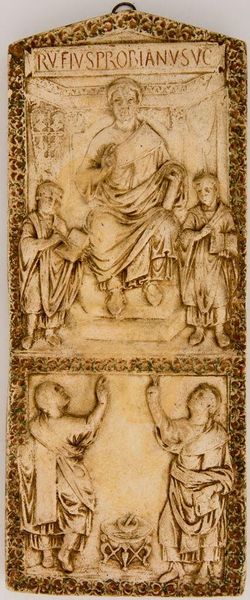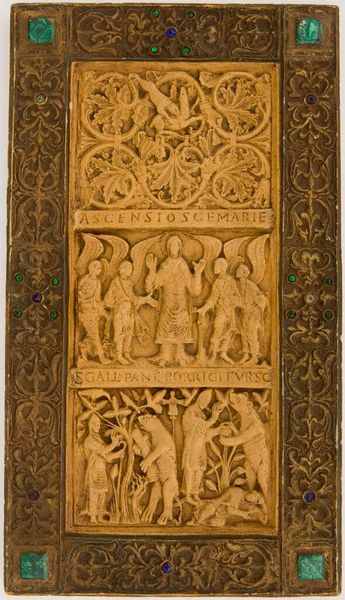
carving, relief, sculpture
#
carving
#
narrative-art
#
baroque
#
sculpture
#
relief
#
sculpture
#
history-painting
Dimensions: height 22 cm, width 19.2 cm, height 12.5 cm, width 9.5 cm
Copyright: Rijks Museum: Open Domain
Curator: Here we have a Baroque carving from between 1620 and 1650 attributed to Isaac van Tissenaken, titled "Moses Draws Water from the Rock". Editor: It's fascinating! I immediately notice the emotional tension, this compressed energy held within the small space. There's such clear desperation etched on the figures’ faces. Curator: It is a powerful depiction of a well-known story. Consider the physical labor involved, the artist carefully removing material, shaping and refining this relief carving, likely using metal tools. What type of stone do you think it is, alabaster or possibly a type of marble? And what was the division of labor in this workshop? Was it solitary, collaborative, and what does that context reveal? Editor: For me, it's how Van Tissenaken employs visual shorthand that really speaks to the collective cultural understanding of the biblical story of Moses, the leader, striking the rock to provide water for his people. The posture of Moses, elevated, commanding, contrasting the bowing figures on the left who are struggling; there's this palpable thirst. Curator: I think the material choice is not only pragmatic to demonstrate skill, and is available and sourced in that region. It influences the subject through qualities that lend themselves to Baroque themes. And consider, to whom was this object being sold? How might that patron affect material selection, size, and overall craftsmanship? Editor: The visual weight definitely carries. The arrangement of the figures pulls your eyes to the miracle itself—water gushing forth. It's not just a depiction of an event; it's a reminder of divine intervention. This resonates within us even today! The image touches some deep part of the psyche and triggers our beliefs, needs and cultural memory. Curator: These are all critical ideas. However, you can see the artist making practical choices; to create, package, transport and market this type of product—which inevitably informs our interpretations, of course. What did they have, and what could they do with it? Editor: Thinking about the deeper symbolic reading adds dimensions, doesn’t it? Considering the story's ongoing influence. The symbolism speaks across centuries! Curator: Indeed! Considering the labor practices, material sourcing and distribution chains embedded within its creation—this object offers insight into socio-economics from this time. Editor: Analyzing both form and symbolism gives a full picture. Curator: Exactly!
Comments
No comments
Be the first to comment and join the conversation on the ultimate creative platform.
